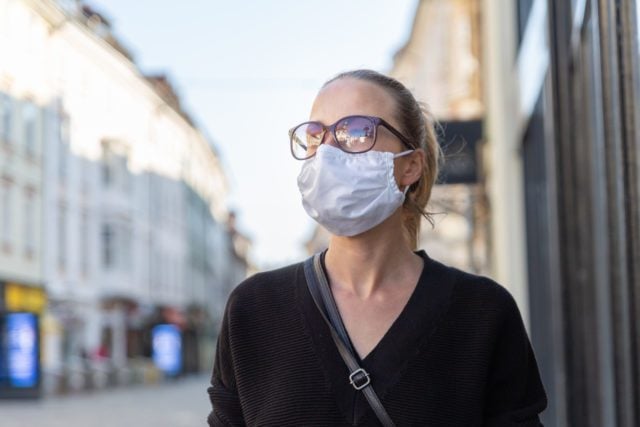New Data: Long COVID Is Most Prevalent in This Age Group
Updated: Dec. 02, 2023

Long COVID is hitting one population the hardest—and it's not the demographic you might guess, according to a national report.
With a new variant of COVID-19 making headlines once again, you might be wondering if your recent sniffles could be a sign of the “Eris” strain of the virus. If you’re also experiencing symptoms like COVID memory loss, creaky joints, random pains, or poor eyesight, you might be concerned about more than just a new illness—meaning, are you one of the estimated 19% of COVID-19 patients who develop long COVID?
A recent report from the CDC, based on the 2022 National Health Interview Survey, reveals that individuals aged 35 to 49 are more likely than other age groups to have experienced or be currently experiencing long COVID. Among those with current symptoms, at the time of the survey 4.7% of people in the 35 to 49 age group reported ongoing long COVID symptoms, compared to 3.8% of 50- to 64-year-olds and 2.7% of 18- to 34-year-olds.
Interestingly, this survey suggests individuals aged 65 and older had the lowest reported incidence of long COVID, at 2.3%. This may be surprising, as science often suggests that seniors tend to be one of the demographics most vulnerable to viral infection.
When factoring in the percentage of Americans who have ever had long COVID (in contrast to those dealing with current long COVID symptoms), the numbers increased, but the ratios remained consistent. A striking 8.9% of 35- to 49-year-olds reported having previously experienced COVID symptoms that persisted for three months or longer, as defined by the survey. While these percentages may seem small, a report by CBS highlights that in the context of the U.S. population, this translates to approximately 18 million people who have reported long COVID symptoms.
The survey also reveals notable gender disparities, with women being more likely to experience or report long-term effects of the virus. Additionally, income levels play a role, as individuals who are 400% or more above the poverty level experience significantly fewer instances of long COVID.
Research: Doing This After Your Flu or COVID Vaccine Maximizes Your Immunity
What is long COVID?
Long COVID is characterized by symptoms that continue after a COVID-19 infection, which were not present before the infection. While these symptoms can be vague, many reported issues include brain fog, vision problems, chest pain, or breathing difficulties, among other concerns. September 2023 immunology research at Yale University identified a few trends among long COVID patients: Relatively low levels of cortisol (“the stress hormone”) in the blood, and higher levels of some antibodies that fight non-COVID illnesses, like Epstein-Barr.
In 2021, long COVID was officially recognized as a condition under the Americans with Disabilities Act (ADA), marking an important step in acknowledging these ongoing health challenges as part of the COVID-19 experience. At-home tests have been developed to screen for long COVID, but it’s essential that a doctor interprets the results since some long COVID symptoms can also be indicative of other illnesses or conditions.
COVID Memory Loss: Here Are the Facts, According to Neurology Experts
How to avoid long COVID
According to the CDC, the most effective way to prevent long COVID is to stay up-to-date with vaccinations. The risk of developing long COVID appears to increase alongside the number of COVID-19 infections, which can occur multiple times to a single individual, especially due to the various virus variants.
A study conducted by the Mayo Clinic found that even if the COVID vaccine doesn’t completely prevent infection, your COVID shot can reduce the severity of long COVID symptoms. Dr. Greg Vanichkachorn, the medical director of Mayo Clinic’s COVID Activity Rehabilitation Program, stated, “This study shows that vaccines can be crucial in managing long-haul COVID and can help alleviate the severity of the condition.”
- Research: Doing This One Thing for 90 Minutes After Your Flu or COVID Vaccine Maximizes Your Immunity
- Sleeping for This Long Each Night May Reduce Heart Disease Risk, Says New Study
- New Study: Getting These 3 Vaccines May Reduce Your Alzheimer’s Risk by 30%
- This Kind of Exercise Can Reduce Men’s Cancer Risk, Says New Study

















